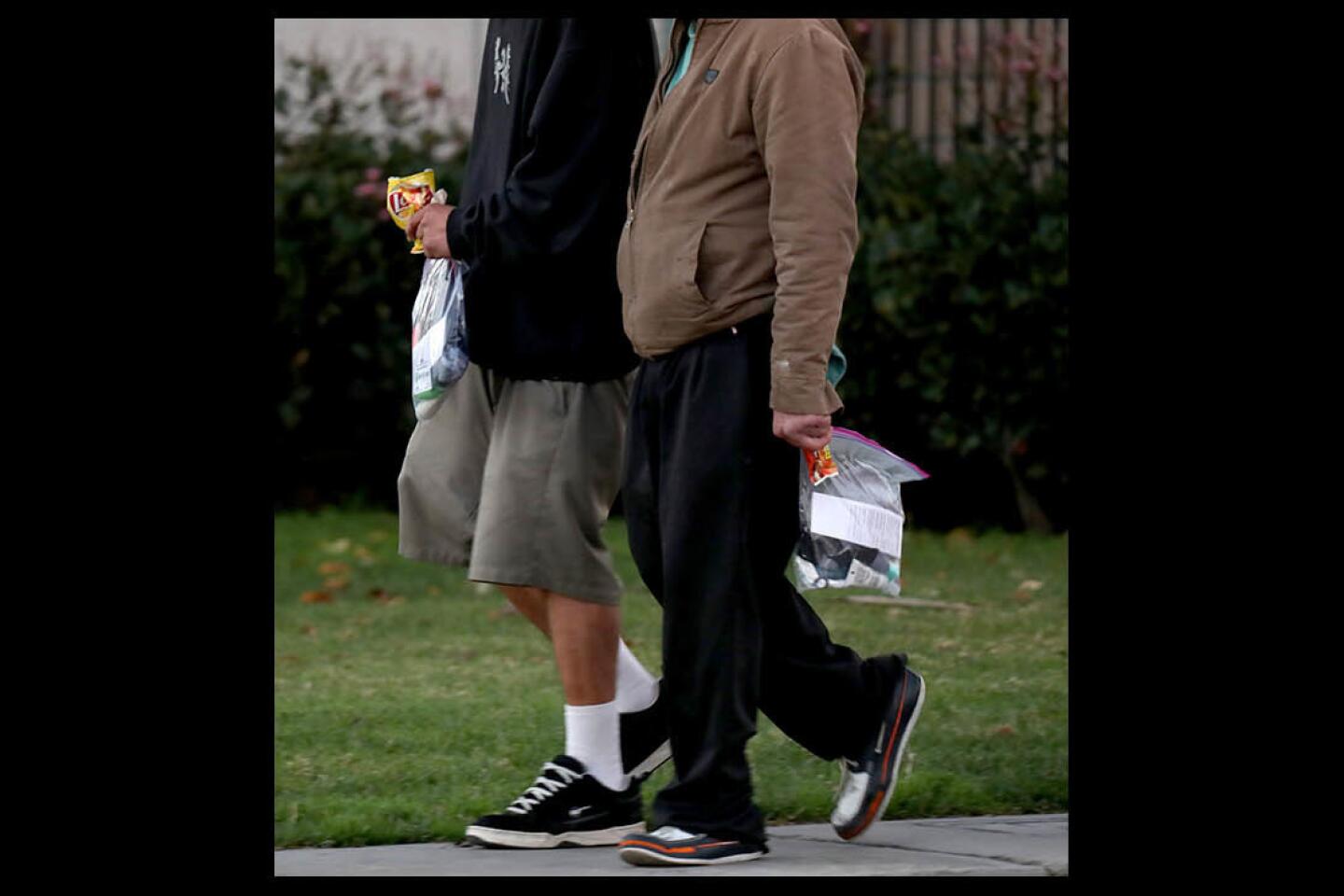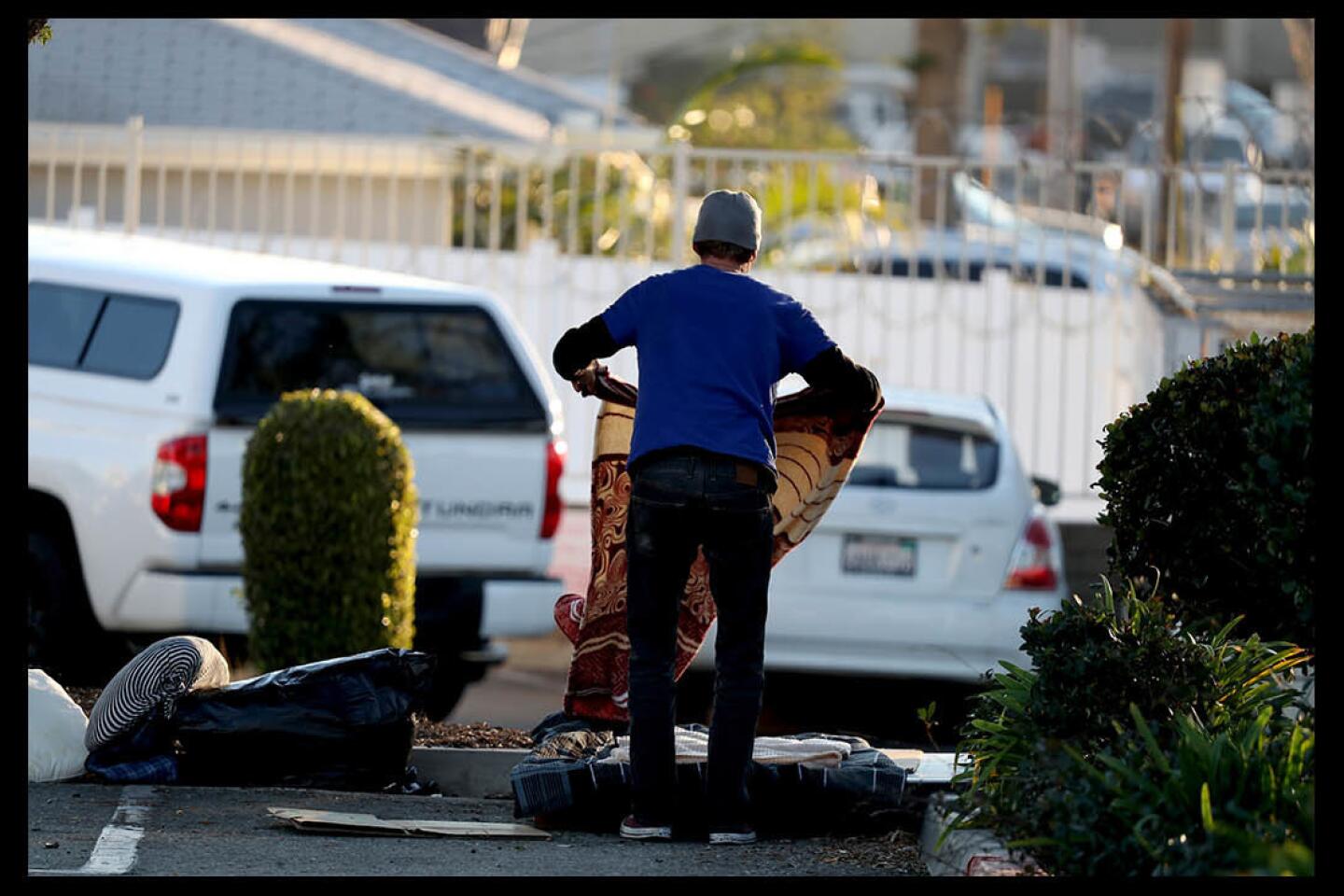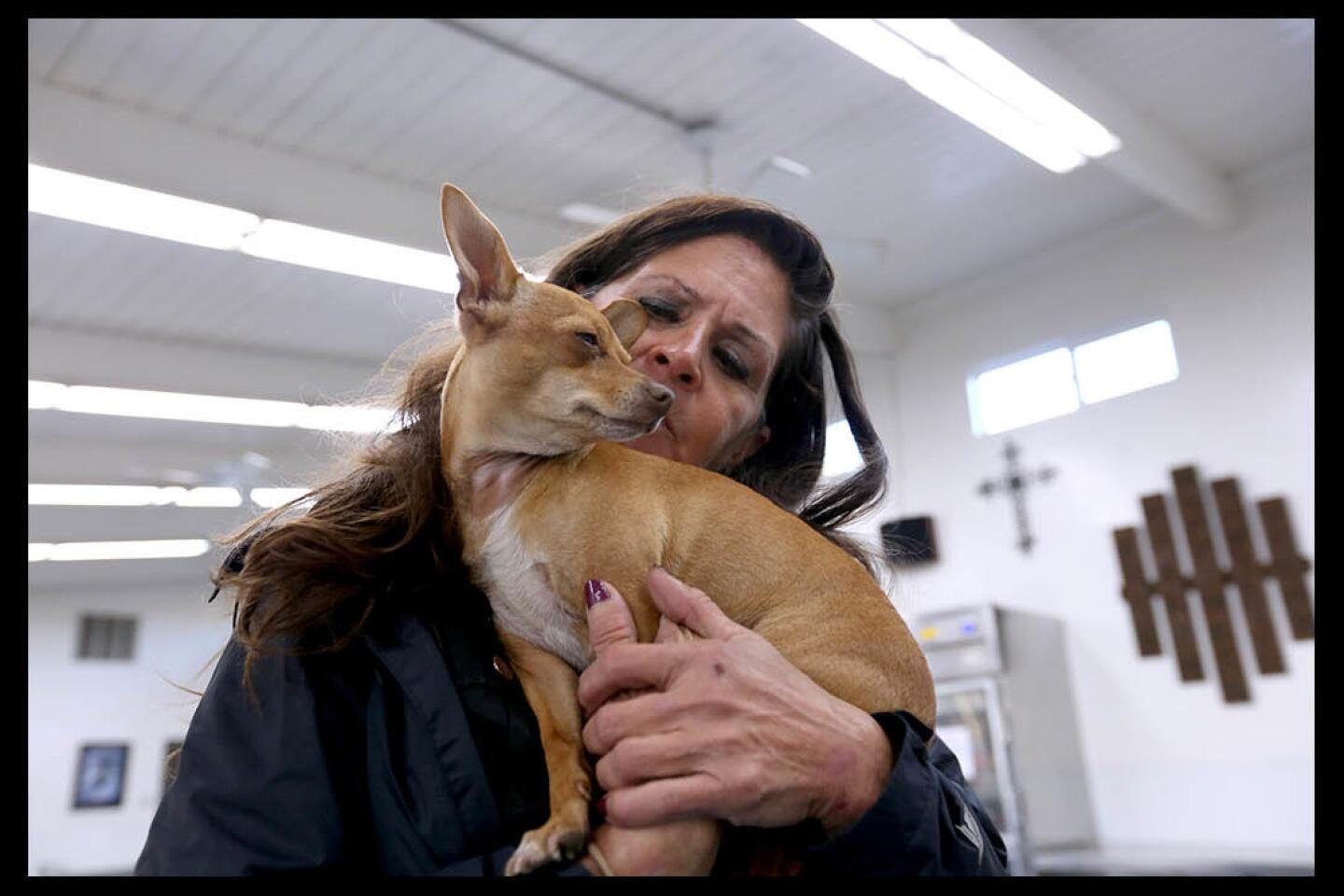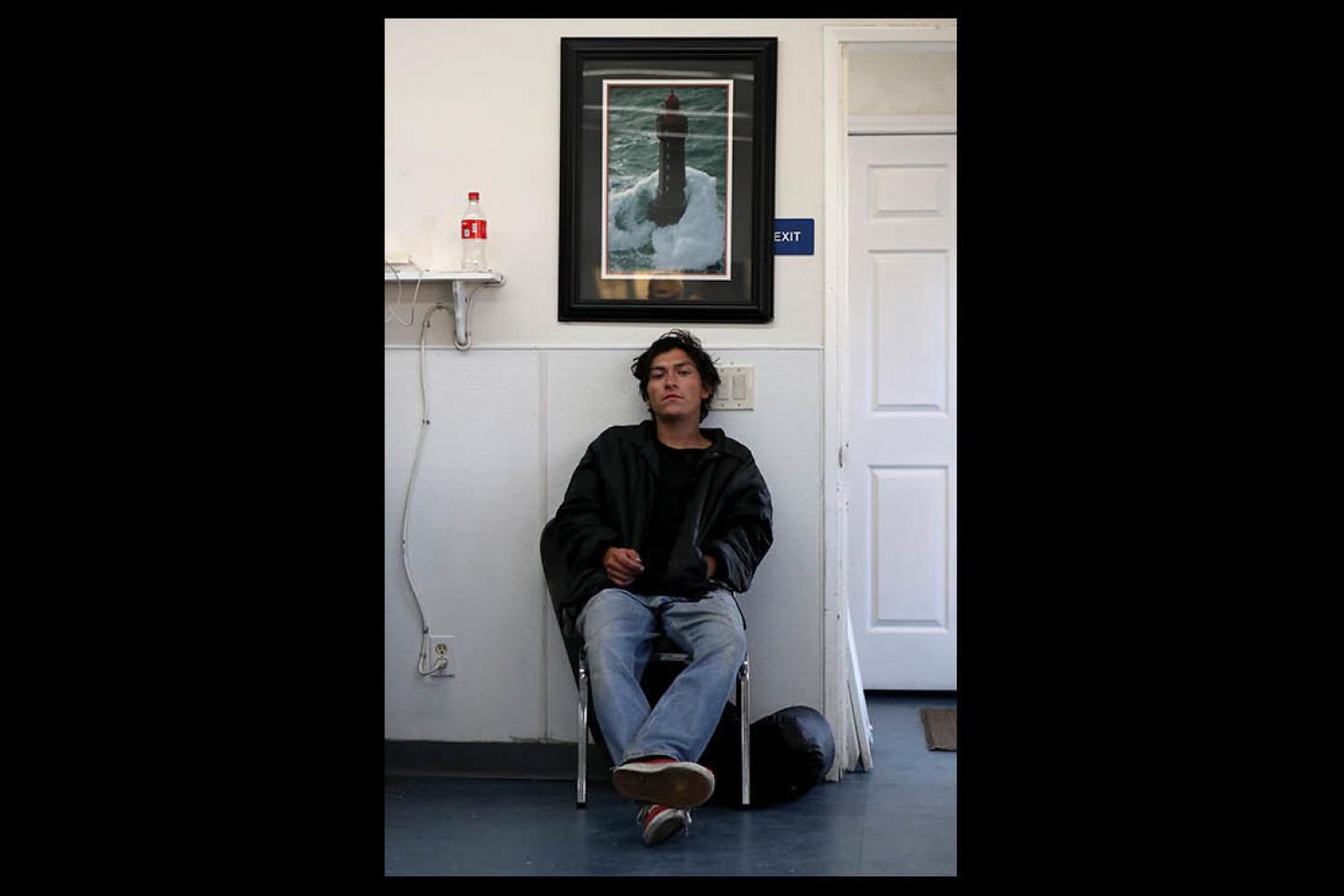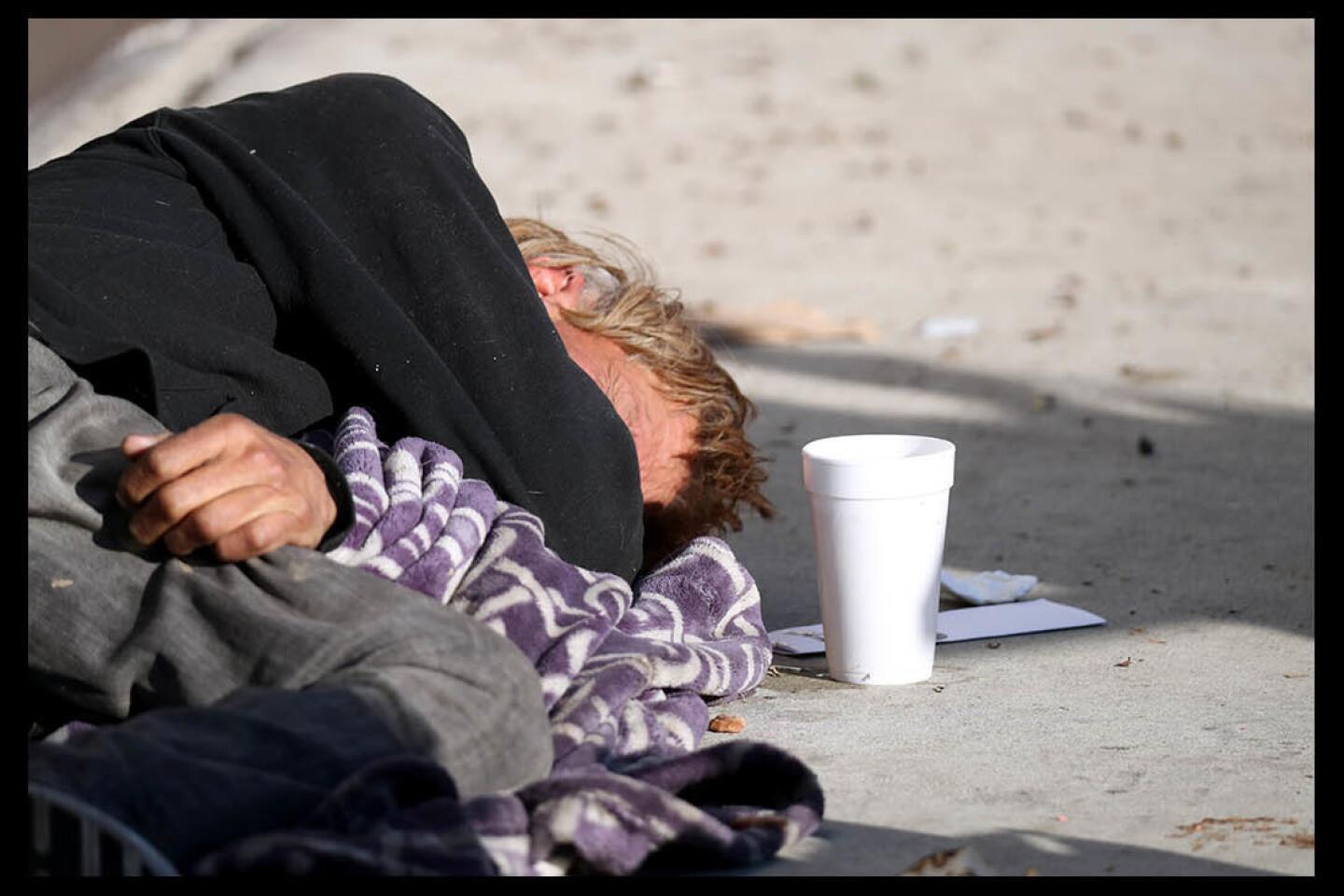Volunteers work to count Orange County’s homeless population
- Share via
In the early morning dark on Wednesday, dozens gathered inside the Magnolia Baptist Church in Anaheim to prepare for a biennial homeless count.
Dressed in green shirts, the volunteers split into groups of three and four and headed to the streets in search of Orange County’s homeless.
The Point In Time homeless count provides the county with updated numbers and demographics on the homeless population to help guide its response to the growing issue. The count is required by the U.S. Department of Housing and Urban Development. Results help determine how much money the county will receive from HUD to address homelessness.
“This count gives us actual information,” said Susan Price, the county’s director of care coordination. “We may not be able to reach everybody. Maybe there will be people who don’t get counted — it’s an imperfect science. But either way the amount of data we will collect [from] this process will yield a lot of insights.”
This year’s count took place on Wednesday and Thursday. The sheltered homeless were counted on Tuesday.
County spokeswoman Molly Nichelson said the final totals from the count will be submitted to HUD in April.
Price estimated that up to 1,500 people volunteered for the count.
One of three teams in Anaheim was led by Amanda Russell of City Net, the nonprofit leading the homeless count. Russell and her crew of three were assigned six spots believed to be frequented by the homeless, though they canvassed several areas.
The team wandered with flashlights among the sites in the dark and the cold.
One of the team members, Roger Kinoshita, said it was his first time taking part.
“Without an accurate count of the homeless, you can’t plan for anything,” the Tustin resident said.
Kinoshita works for the Jamboree Housing Corp., an affordable housing developer, as does another volunteer on Russell’s team, Raul Fernandez. The fourth member, Scott Barnes, is married to Anaheim Councilwoman Denise Barnes.
During the count, the first few areas under a 5 Freeway overpass and small nearby field on Euclid Street afforded no homeless, though there were signs of life — the smell of a fire recently extinguished and refuse.
The seeming lack of homeless that morning may have been due to a temporary homeless shelter that opened in Anaheim last month, which city spokesman Mike Lyster said houses about 180 people with capacity for 200.
In the half-light of morning, the group located a few homeless.
Russell spoke with a woman living in a small structure cobbled together with a blanket, an old drive-through menu and a ladder. She read a series of questions from the Point In Time survey on her cellphone.
The homeless woman, who identified herself only with initials and couldn’t recall her age, remained in her settlement during the discussion. She said she’d been outside for at least 30 years. She was given a bus pass and hygiene kit.
Another homeless woman Russell surveyed, Karly Bosson, said she’d been living out of her car for about seven weeks. Bosson said her leg had been badly injured after she’d been hit by a drunken driver in Nevada, her home at the time.
“I can’t sit or stand without pain,” Bosson, 40, said through tears. “I have pain all day long.”
Price said the countywide “momentum” to rectify homelessness is great, and a major contributor to that is a federal lawsuit overseen by U.S. District Judge David O. Carter.
The lawsuit was launched by homeless advocates after the removal of a tent city at a riverbed near Angel Stadium.
“He’s taking on the issue,” Price said of Carter. “So that has kind of put it in the limelight and held some people to be part of the solution — maybe moved our progress forward.”
Carter used the 2017 homeless count — which identified 2,584 unsheltered people — as a basis for his order in August that the county provide housing for at least 1,550 people.
“This 2019 data is going to be a starting point for moving forward on how many shelter beds we actually need and how many permanent affordable units we need in the county,” Price said.
All the latest on Orange County from Orange County.
Get our free TimesOC newsletter.
You may occasionally receive promotional content from the Daily Pilot.


